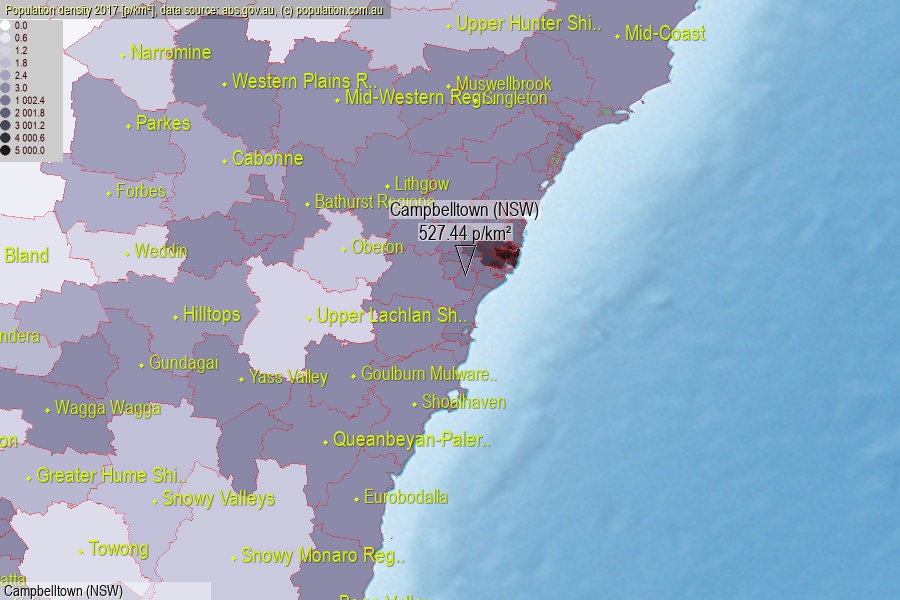 population.com.au
population.com.auLast official estimated population of Campbelltown (NSW) City (as Local Government Area) was 164 508 people (on 2017-06-30)[2]. This was 0.66% of total Australian population and 2.068% of NSW population. Area of Campbelltown (NSW) is 311.90 km², in this year population density was 527.44 p/km² . If population growth rate would be same as in period 2016-2017 (+1.82%/yr), Campbelltown (NSW) population in 2025 would be 190 057. [0]



Click to enlarge. Campbelltown (NSW) is located in the center of the images.
Population [people], population density [p./km²] and population change [%/year] [2]
[1996-2001] +0.71 %/Y
[2001-2002] -0.06 %/Y
[2002-2003] -0.24 %/Y
[2003-2004] -0.78 %/Y
[2004-2005] -0.25 %/Y
[2005-2006] -0.46 %/Y
[2006-2007] +0.42 %/Y
[2007-2008] +0.85 %/Y
[2008-2009] +1.06 %/Y
[2009-2010] +0.22 %/Y
[2010-2011] +0.57 %/Y
[2011-2012] +0.85 %/Y
[2012-2013] +1.24 %/Y
[2013-2014] +1.26 %/Y
[2014-2015] +1.47 %/Y
[2015-2016] +1.88 %/Y
[2016-2017] +1.82 %/Y
[0] Calculated with linear interpolation from officially estimated population
[1] Read more about LGA and Australian Statistical Geography Standard (ASGS) on abs.gov.au
[2] Population data from Australian Bureau of Statistics (Population and density: 2017; change: 2016-2017)
[3] Digital Boundaries: Australian Statistical Geography Standard (ASGS) 2016.